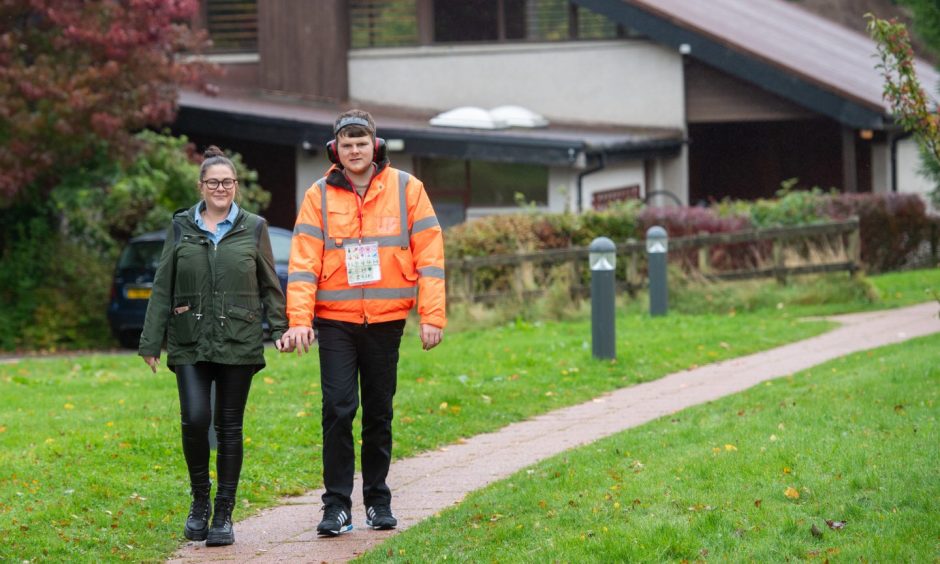
Sam was so nervous he refused to leave the house.
But Camphill School Aberdeen has turned his life around. “It was like I’d got my old boy back,” said mum Gillian Gartshore.
Sam Middleton, 18, is autistic and non-verbal. Before starting at Camphill in August 2023, life wasn’t great.
“When Sam first came to Camphill he wasn’t in the best of places,” said Gillian.
“He hadn’t gone to school for nine months, he refused point-blank to go.
“When he started transitioning to Camphill, he was very nervous, he didn’t trust anyone.
“But we persevered, and a little bit at a time, he eventually managed to settle. Probably quicker than we actually thought he would.
“He just loves it, he was like a different boy. His mood just lifted, and it was easier at home as well.
“It was like I’d got my old boy back.”
Camphill School Aberdeen opened its doors in 1940, when people with additional support needs were excluded from society
Camphill School Aberdeen is based in Bieldside in the west of Aberdeen.
Set over 50 hectares of open space and peaceful woodlands among alpacas and horses, its services have developed significantly over the decades.
They now include an integrated nursery, primary and secondary school, which blends a therapeutic approach to education with the formal curriculum.
There are 10 residential homes for young people up to the age of 25, leisure and recreational facilities, alongside onsite medical care and 15 vocational arts, land and craft workshops.
The new Murtle Market complex is opening in November, which will include an organic, sustainable store (selling items made by the young people), takeaway café, and heritage centre.
The school opened its doors in 1940, having been set up by Austrian refugees who fled to Aberdeen amid impending war in 1939.
At that time, children with additional support needs were excluded from society.
The principles of Rudolf Steiner
The founders of Camphill School Aberdeen were led by the principles of Rudolf Steiner (1861-1925), the Austrian philosopher and educationalist.
These principles are the cornerstones of the Waldorf and Camphill schools which are now thriving across the world. There are more than 1,200 Waldorf schools globally, and more than 100 Camphill communities (though just two Camphill schools in Scotland – the other is in Perthshire).
Steiner said: “We should not learn to teach out of any book, other than the one lying open before us and consisting of the children themselves.”
His theories – followed by Camphill School Aberdeen – involved integrating education and craft workshops with the principles of modern medicine, psychiatry and the circular economy, before they were widely recognised.
Camphill School Aberdeen was considered highly innovative at the time, especially when people with learning disabilities were often institutionalised.
In the more than eight decades since, the school has provided day and residential support to children and young people with disabilities in the north-east.
Today, it offers a mix of day and residential services that integrate education, life-long learning and care.
The school supports more than 100 young people with learning disabilities and additional support needs.
They take part in meaningful work, develop life skills, build friendships and grow in confidence and independence.
The idea is that each person reaches their fullest potential, no matter how vulnerable they might appear.
But what do locals know about what goes on at Camphill School Aberdeen?
But despite a long and storied history, many people don’t know about it, other than a small sign on North Deeside Road pointing the way to the estate. They don’t know what happens there, and what makes it such a special place.
Camphill School Aberdeen received a glowing inspection report last year.
So what is the secret behind the school’s success? What is it that they do differently, and why does it work?
I spoke to Wiepke Dunnewold, day service manager at Camphill School Aberdeen.
I asked her why, after more than 80 years, Camphill School Aberdeen is still going strong, and why so many parents still want to send their children there.
“I have only been here for 20 years, so I can’t say for sure.
“The aim we have is that we give the young people real purpose.
“We look purely at what they can do, not what they can’t do, and we focus on potential.”
Workshops galore: from farming and beekeeping to pottery and bike mechanics
A key feature of Camphill School Aberdeen is the workshops, which allow the young people to gravitate towards what they enjoy doing, unlocking hidden talents along the way.
Workshops include an organic farm and walled garden, traditional handmade candle making, beekeeping, handmade paper making, lino printing and art, traditional soap making, tea making, jewellery making, woodwork using traditional tools, felting, wool spinning, weaving using traditional looms, kitchen, and bike mechanics.
There’s also a zero-waste refillery and organic farm shop.
“We have 15 different workshops here on site, which is an incredible luxury obviously,” said Wiepke.
“And they’re all things that are needed.
“So we have a two-acre garden that grows fruit and vegetables which we provide for the residential houses.
‘They’re traditional processes but they make sense to the young people’
“We have four horses which we look after, but which also provide riding therapy. We have a working farm. There’s a wood workshop, where the wood that’s not needed anymore on the estate is being processed into beautiful items. We have a weavery, lots of different things.
“The rhythm they have when they’re working on the loom is very therapeutic, but at the same time they’ve made an incredibly beautiful item. And they’re all very much needed, but they also follow processes.
“For example, the traditional process of weaving, or bootwork, where you work with a pole lathe, where you work with a drawhorse, they’re traditional processes but they make sense to the young people.
“They can understand those processes. I usually don’t understand a machine, neither do the young people. And it’s really important processes are understood and followed through, so they make sense and they give meaning.”
Familiar routines and natural rhythms
Daily activities such as cooking, enjoying meals, laundry, and cleaning, as well as going on outings and celebrating events and birthdays, are therapeutic for the young people and ensure everyone makes a valuable contribution to the home.
All this creates familiar routines and natural rhythms – vital for young people with learning disabilities and complex additional support needs.
I notice autumnal leaves on the walls of one of the residential blocks.
“The young people can’t read the clock, or they don’t know what day of the week it is, so it gives them a sense of time, ‘now we are in autumn’,” said Wiepke.
“So we spend a lot of time with the seasons, we celebrate certain festivals. We’ve just had our harvest meal where we had all kinds of soups and we shared them together with the whole community.
“So ‘this is now harvest time, now we’re getting ready to go into winter.’
“People who have been here for a few years really get a sense for that.”
Rudolf Steiner and the importance of freedom
I asked Wiepke how closely Camphill School Aberdeen follows the philosophy and teachings of Rudolf Steiner.
“Rudolf Steiner writes a lot about freedom, and how important it is for human beings to be free.
“And I think what we do is help young people become as self-directing as possible.
“In the workshops, young people work on modules and units, for example making a spoon, fixing a bike puncture, mulching a bed. You can do everything, really.
“And there are different levels of engagement. Some people will only be on the social, taking part level. Because that’s where their potential is. But some other people can develop towards self-directing and becoming as free as possible.
“There’s definitely the possibility for many young people to be way more involved, not only in Camphill, but outside Camphill in local businesses.
“There’s not much provision available for these young people after they turn 25, so it would be nice to see them more integrated into employment or volunteering or training.
“That’s the wish, that other people look at them and think, ‘oh, you can do that’.”
She added: “To have this setting, with the variety of opportunities we offer – not only in skills development but in therapeutic health and wellbeing and self-help skills – we can help them achieve their potential.”
‘This is Sam’s first home now. My home is his second home’
Sam started at Camphill three days a week, then went to five days, and in April this year he went residential.
This means he lives at Camphill, coming home every second weekend and during the holidays. Mum Gillian visits him at Camphill once a week.
I asked her where Sam would be without Camphill. She took a deep breath.
“I think he would be struggling,” said Gillian.
“If he didn’t have the open space of Camphill and all the support of everyone round about him, we’d still be where we were a year ago.
“I mean, it got to the stage where he wasn’t leaving the house, he wouldn’t get out of the car.
“Now that he’s learned to trust the people here, it’s like a second home.”
She corrects herself. “Well, it’s his first home now. My home’s his second home.
“This is just the place for him, I’m not sure how to describe it, he’s come out of his shell and sort of flourished.
“He’s more confident in what he’s doing, he’s lugging trees around, mowing the grass. I never thought to let him loose on the lawnmower! He’s becoming that bit more independent.
“Obviously he does still need a lot of support, but it’s really helping him. His confidence is really building and you can see how happy he is.”
‘I would’ve kept Sam at home forever if I could, but I can’t give him what Camphill can’
What does Sam like most about Camphill?
“Sam’s a grafter, he likes to work hard, the manual stuff, so down in the gardens, scooping up horse poo, anything that’s manual and keeps his brain stimulated.
“He likes spending time in the bike workshop, fixing the bikes, horses he deals with a lot, and he likes to work in the gardens as well. Any sort of physical activity.”
I asked Gillian about Sam’s future.
“I feel very much that Camphill is preparing Sam for the future.
“He’s here until he’s 25, and then obviously we’ll have to look elsewhere for him. But I’m hoping by that point – and that’s another seven years away – he’ll be even more independent.
“He’ll always need one-to-one support, but every month he’s doing different things where I think ‘oh, I didn’t know you could do that’, I just wasn’t aware he had that skill.
“So I’m optimistic about his future. This is the best place for Sam and I was over the moon to get him into Camphill.”
As Gillian speaks, I can see the relief etched across her face. I tell her she looks happy.
“I am, I am.
“You know, I would’ve kept Sam at home forever if I could. But I can’t give him what Camphill can. So it was a no-brainer for me to put him here, let him go residential and let him flourish.”
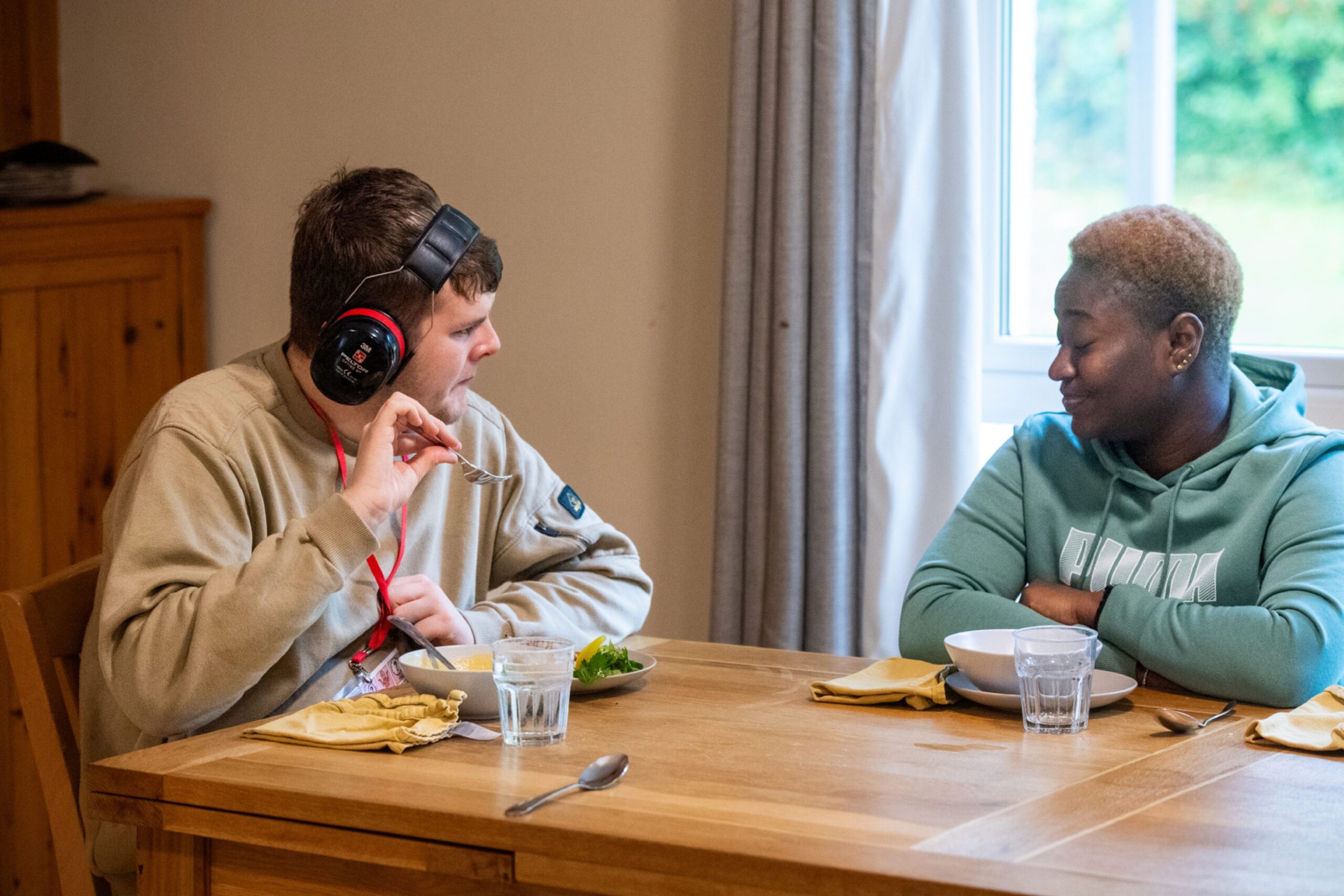
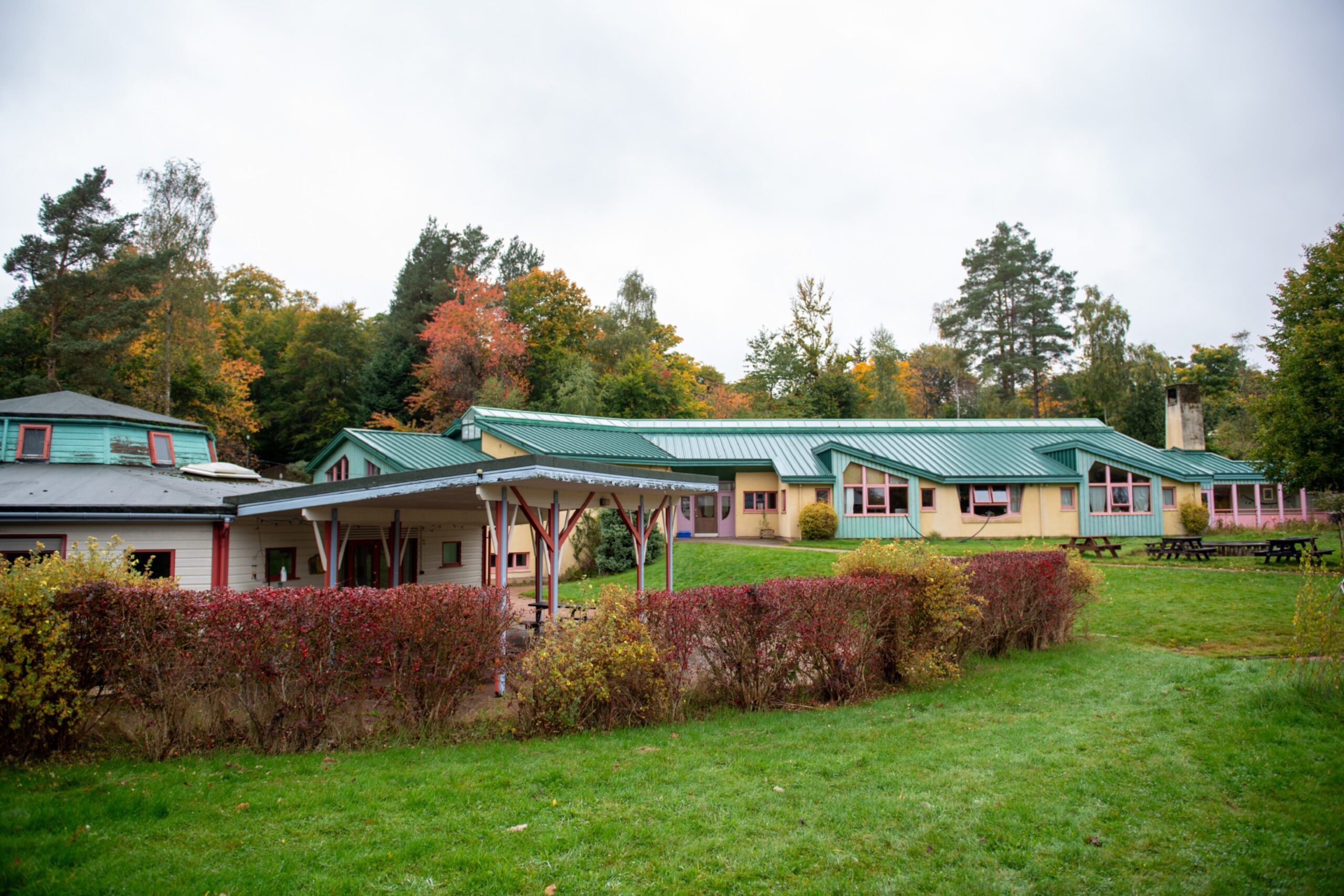
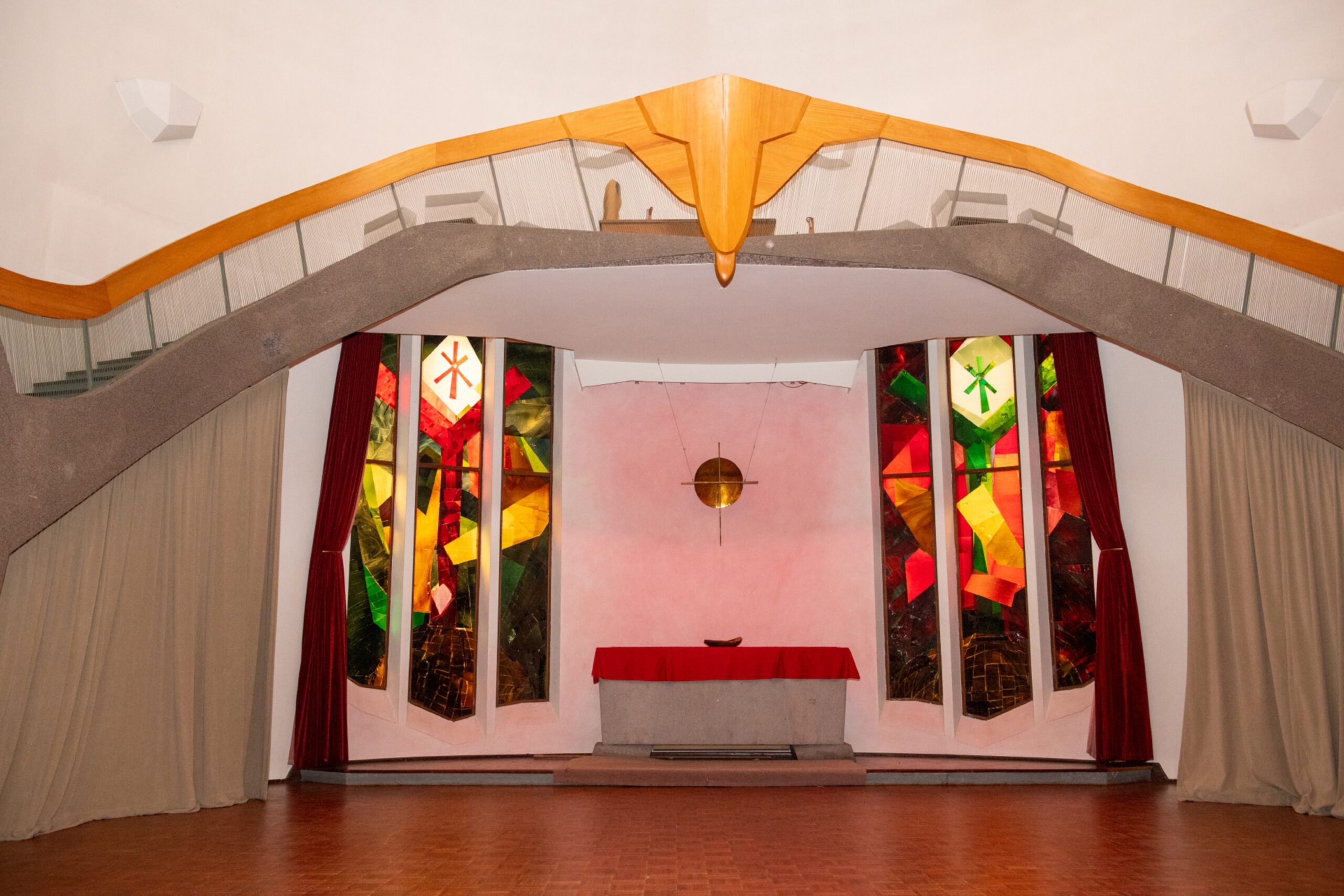
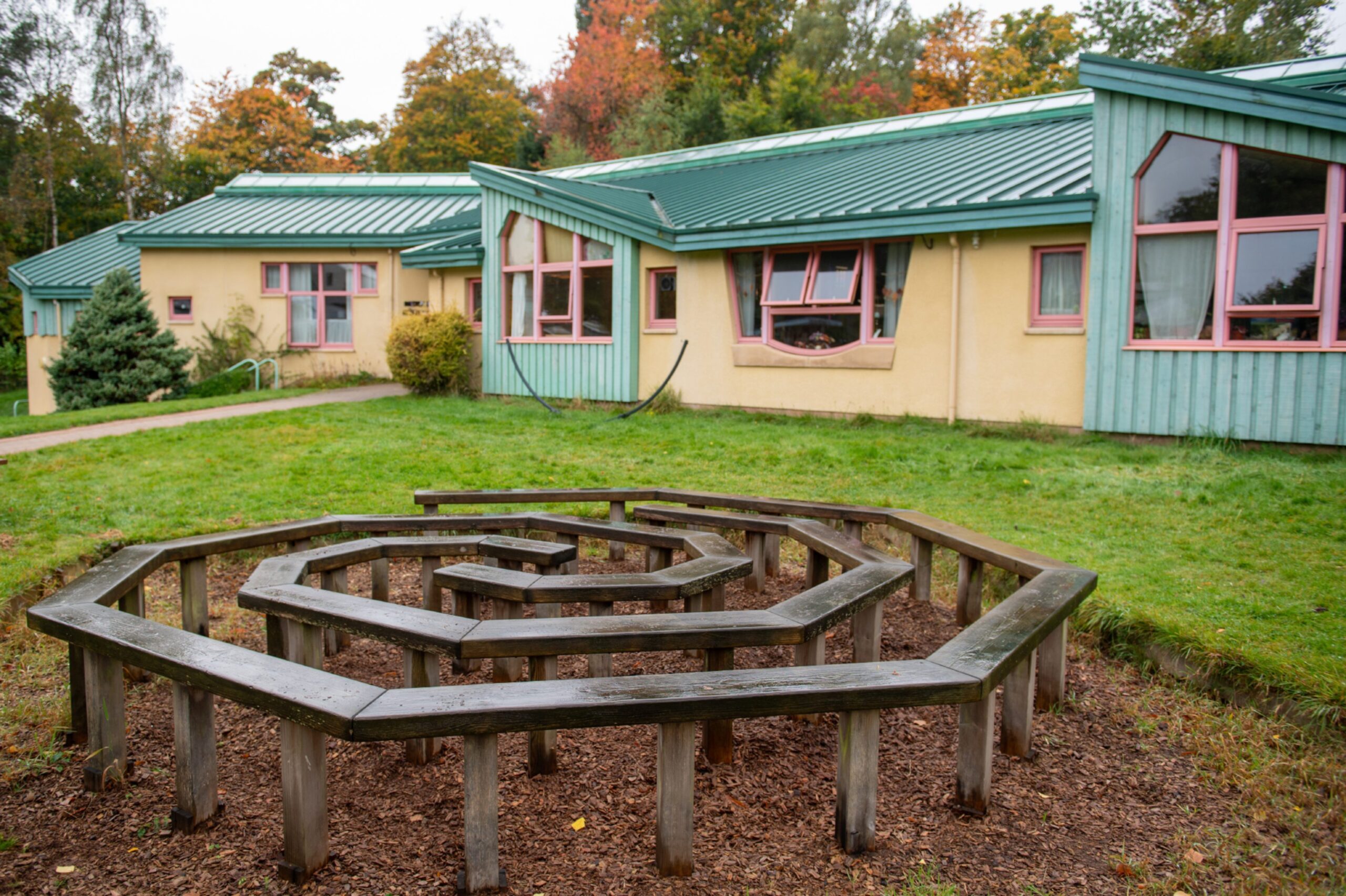
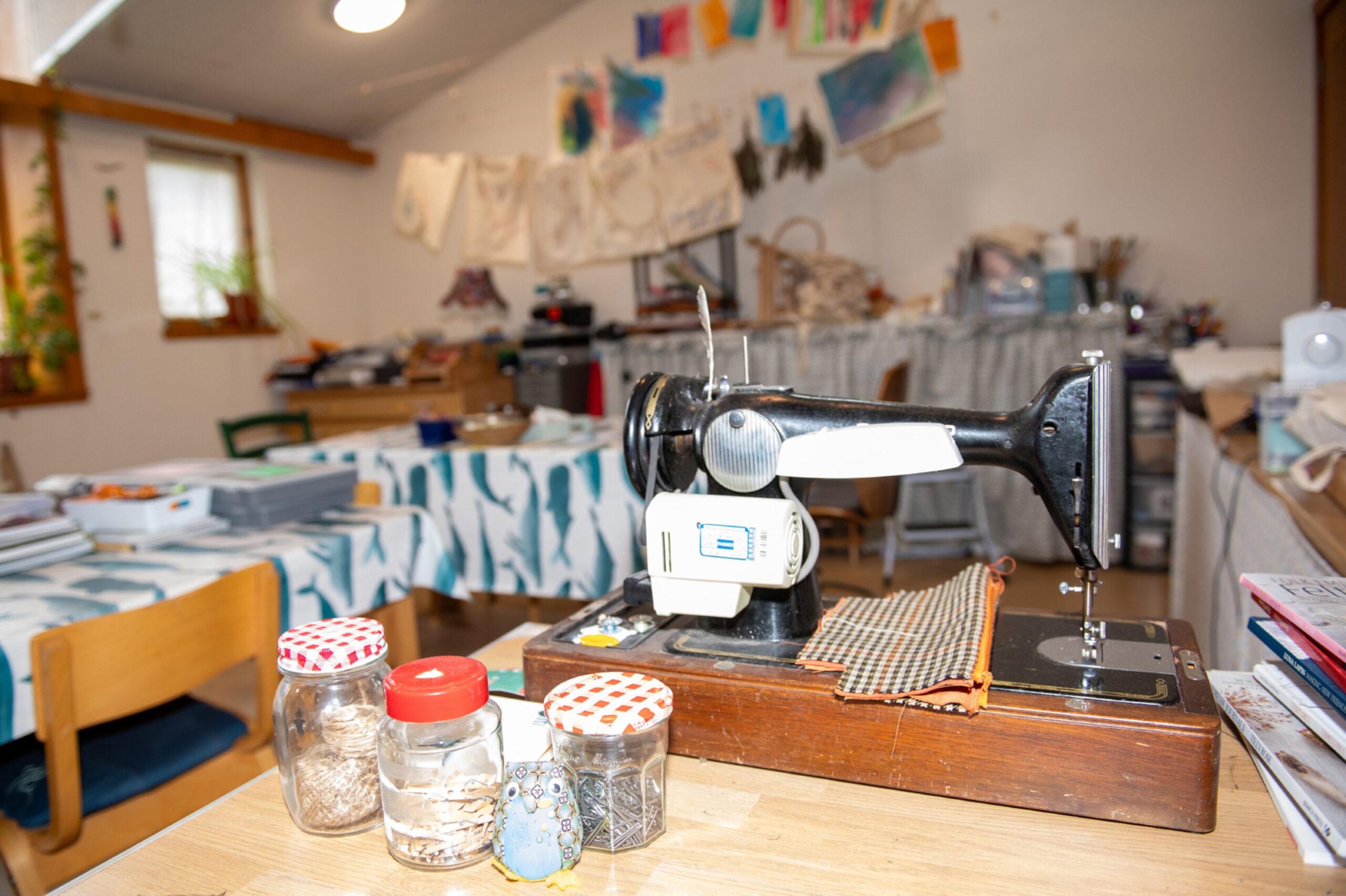
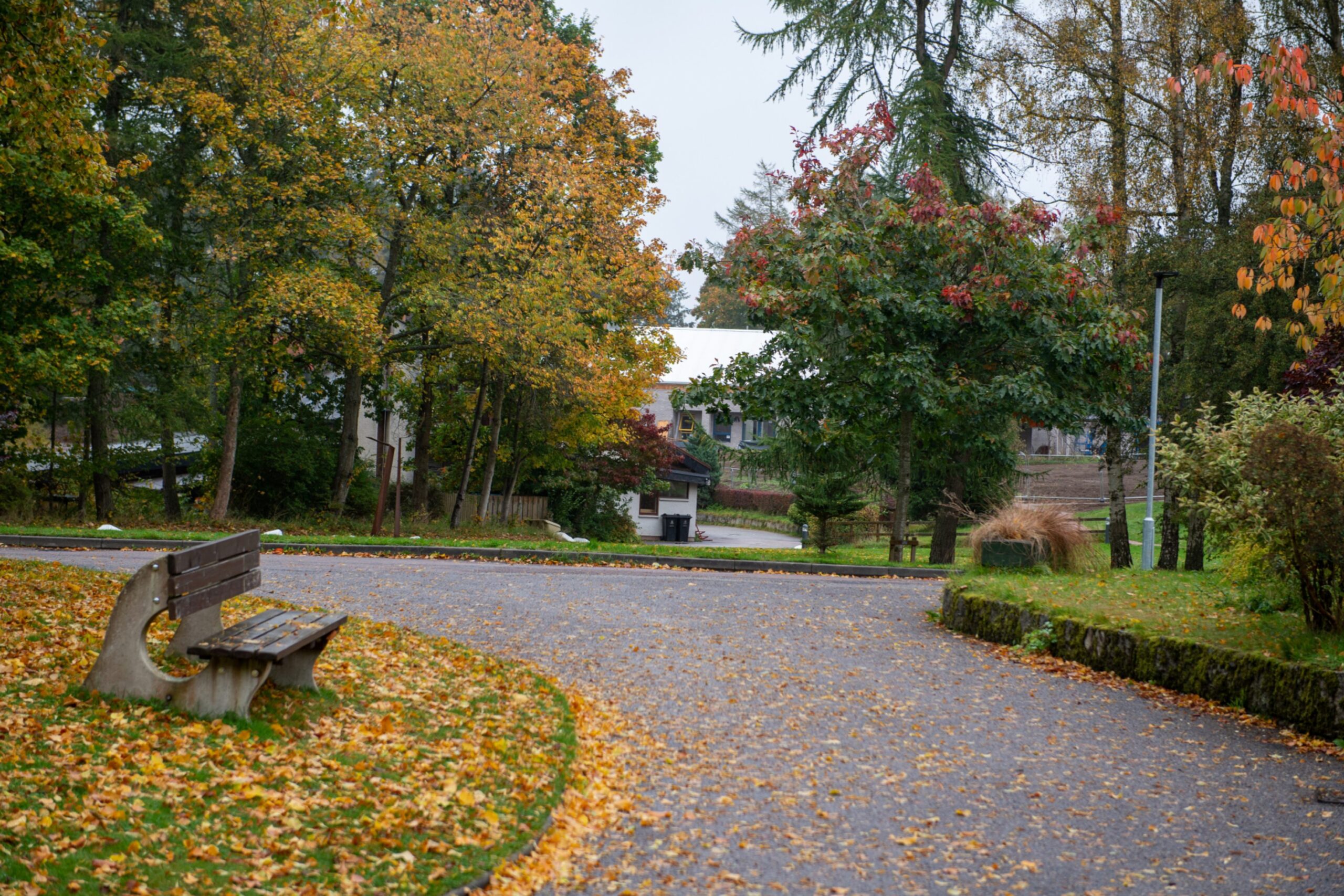
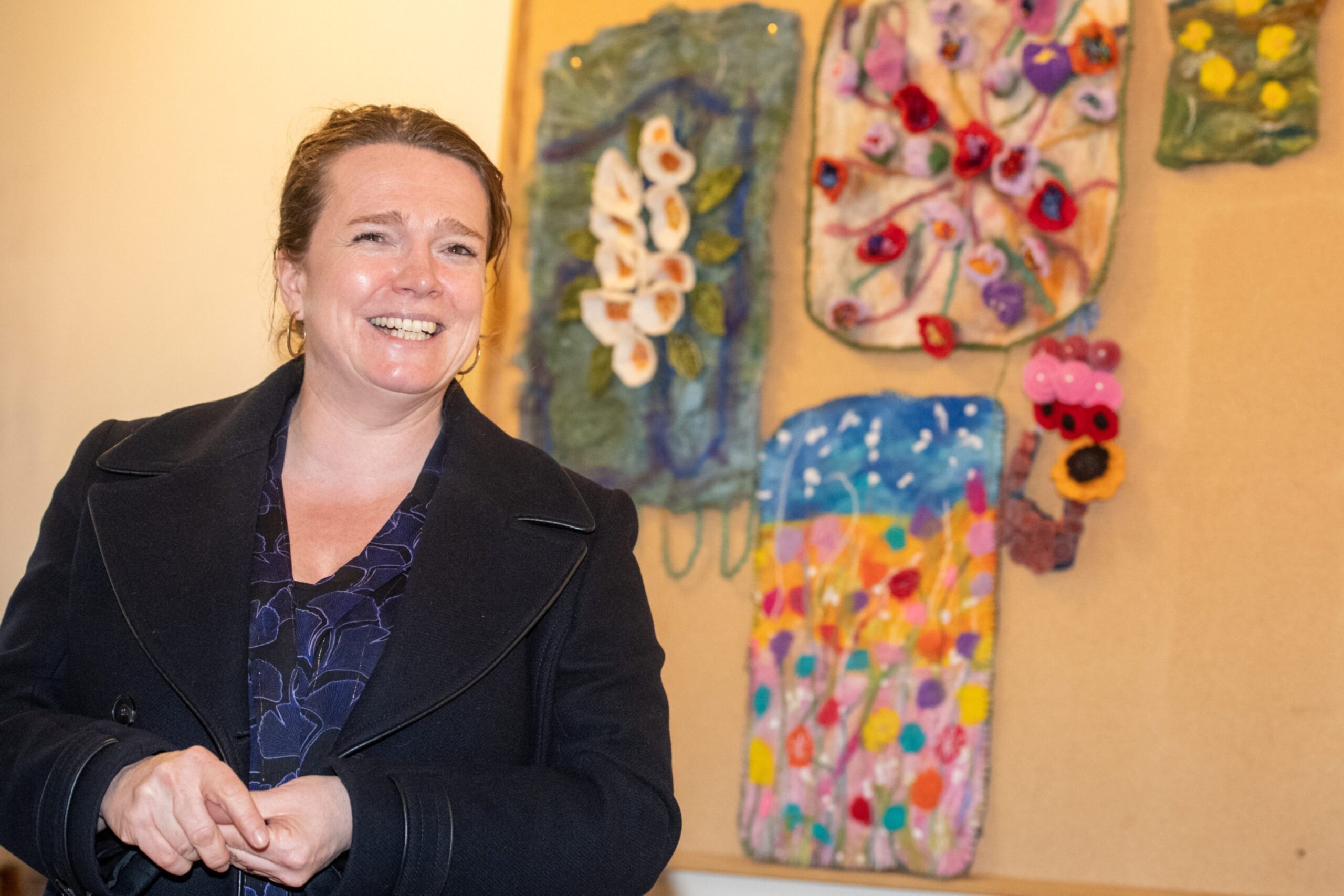
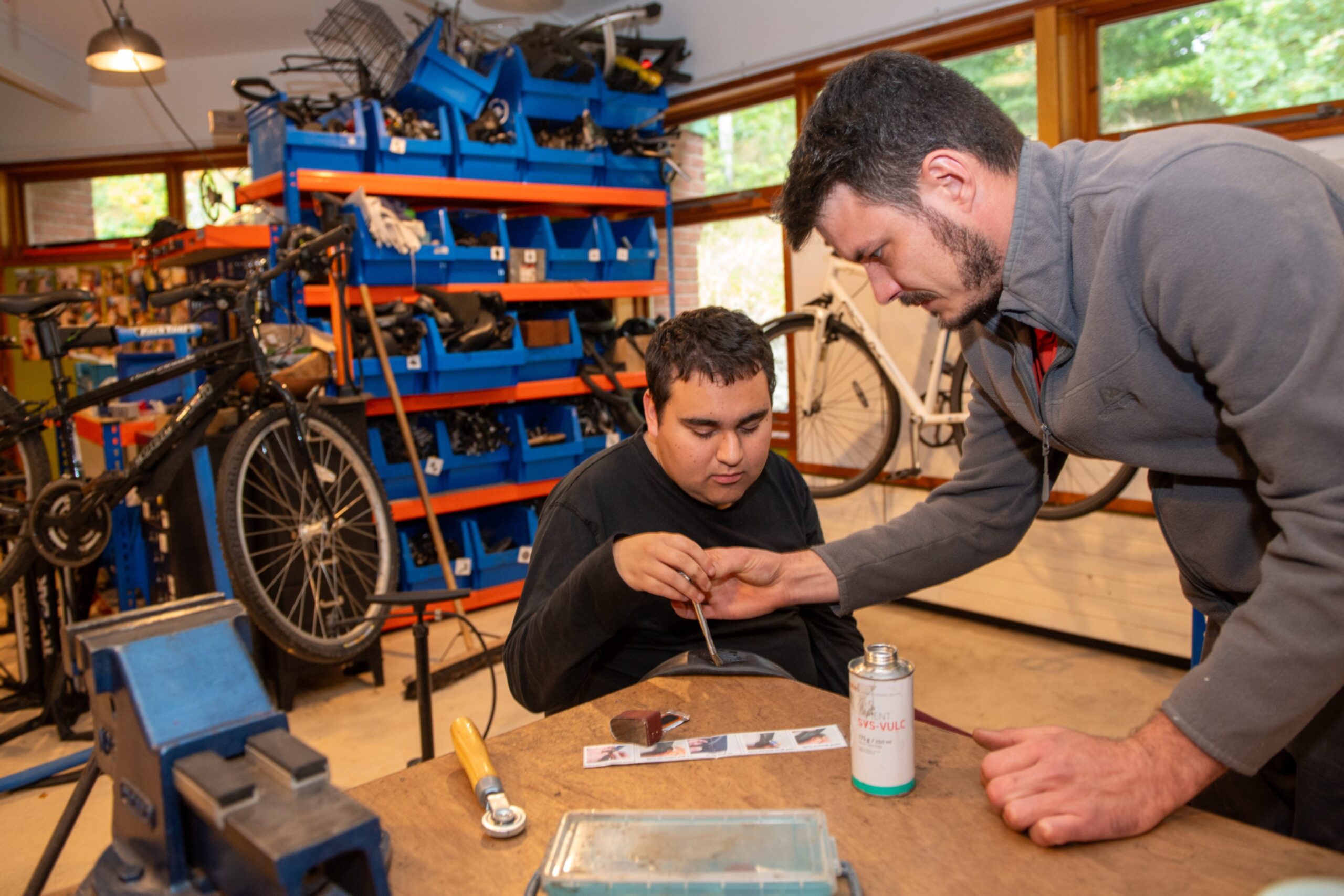
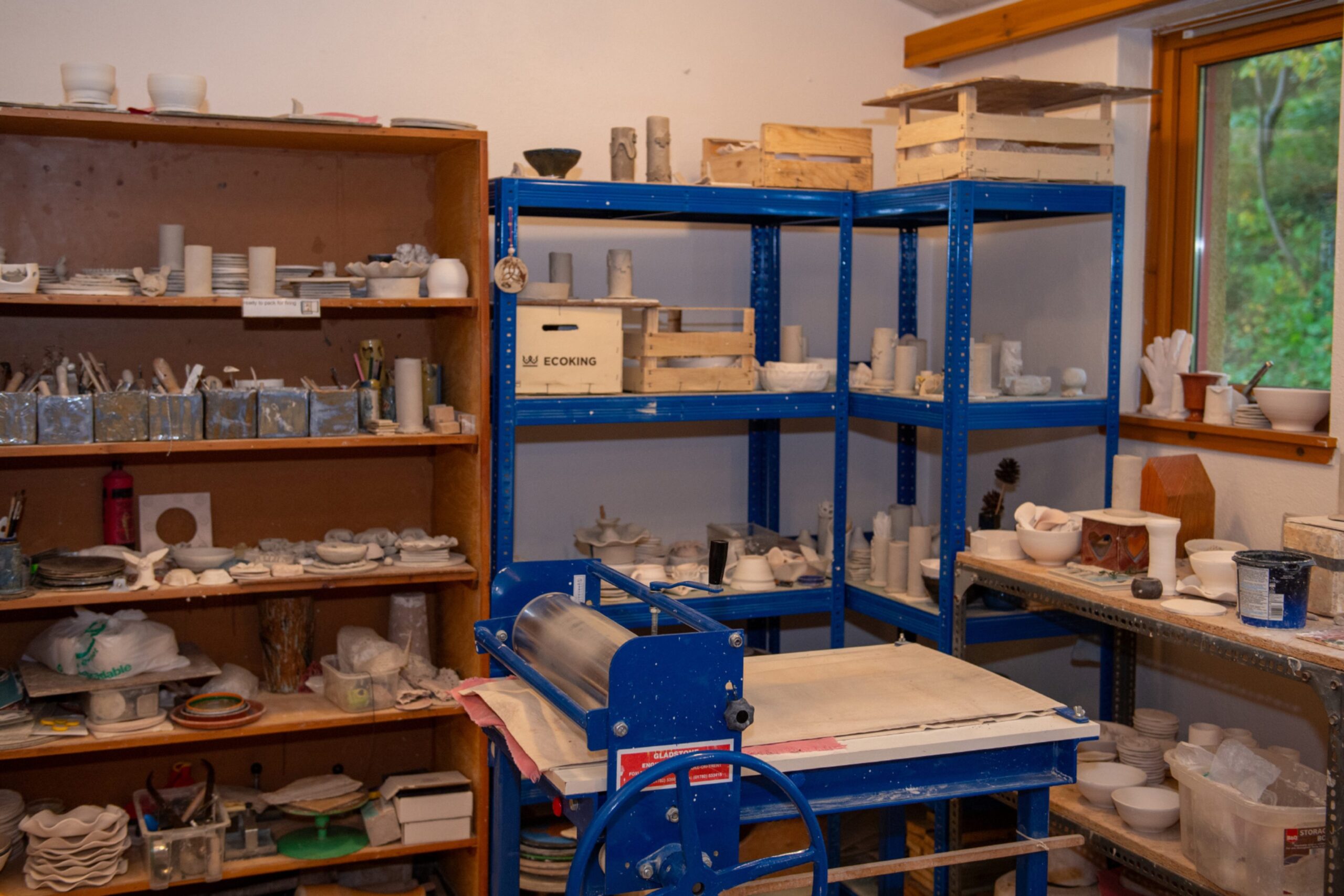
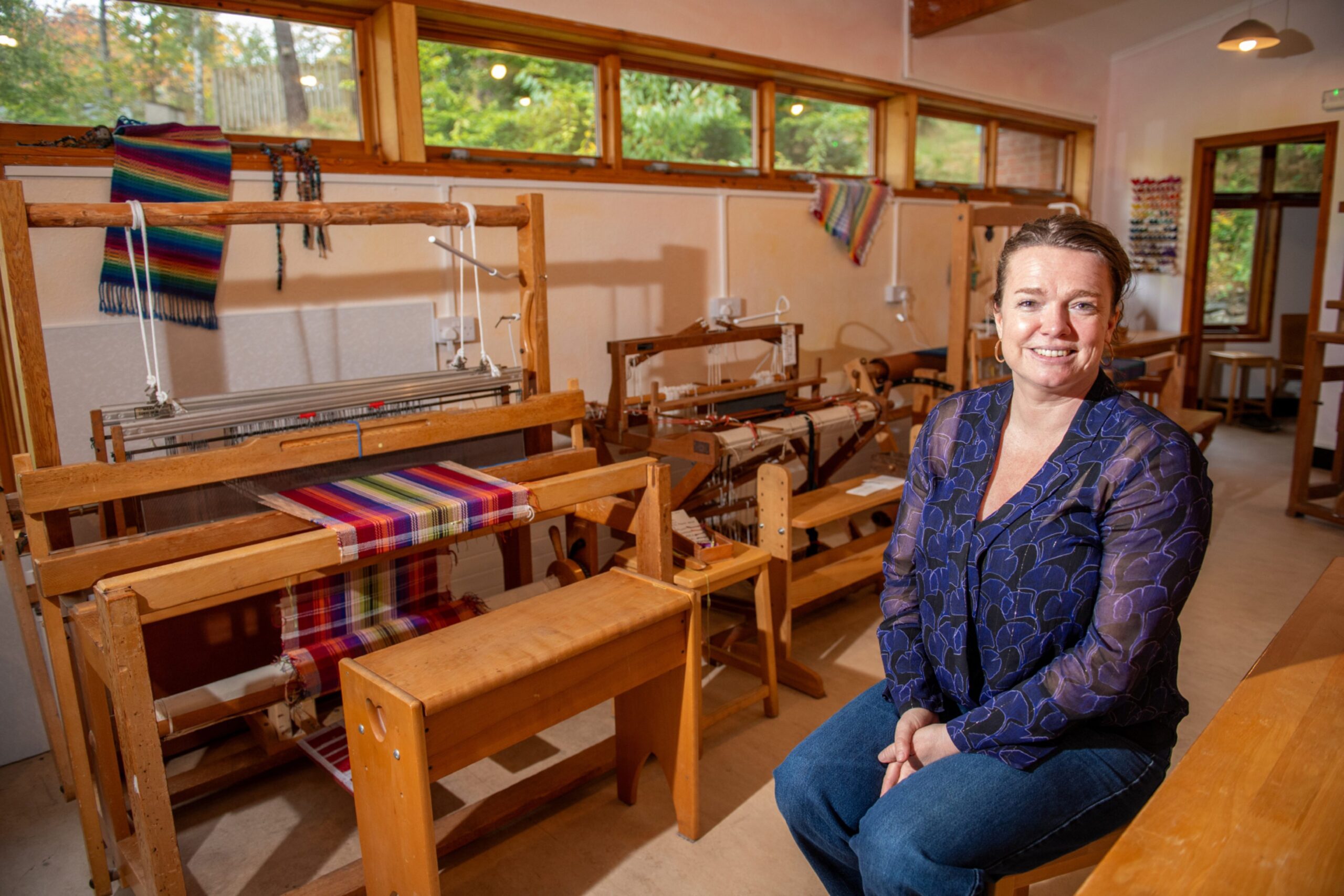
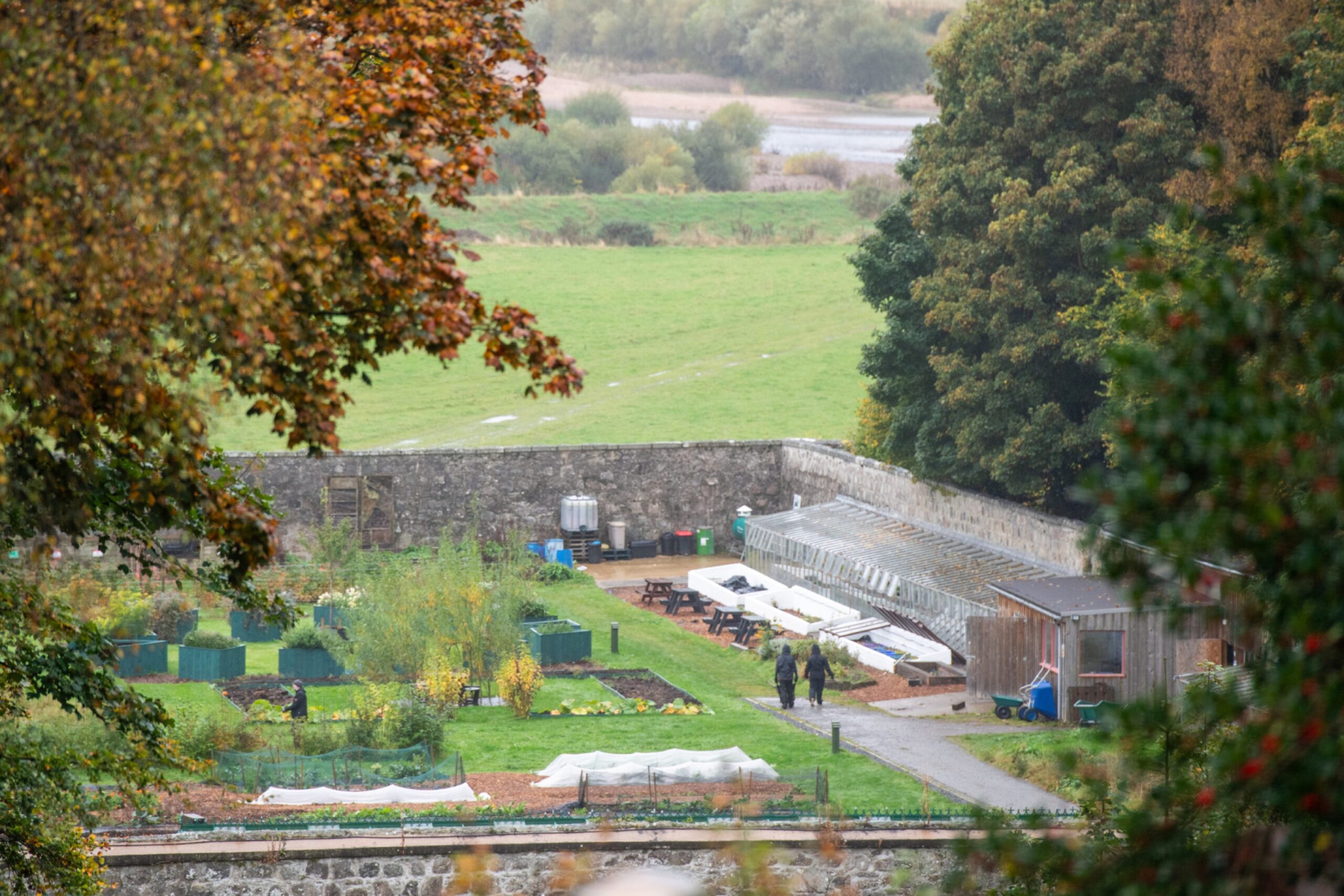
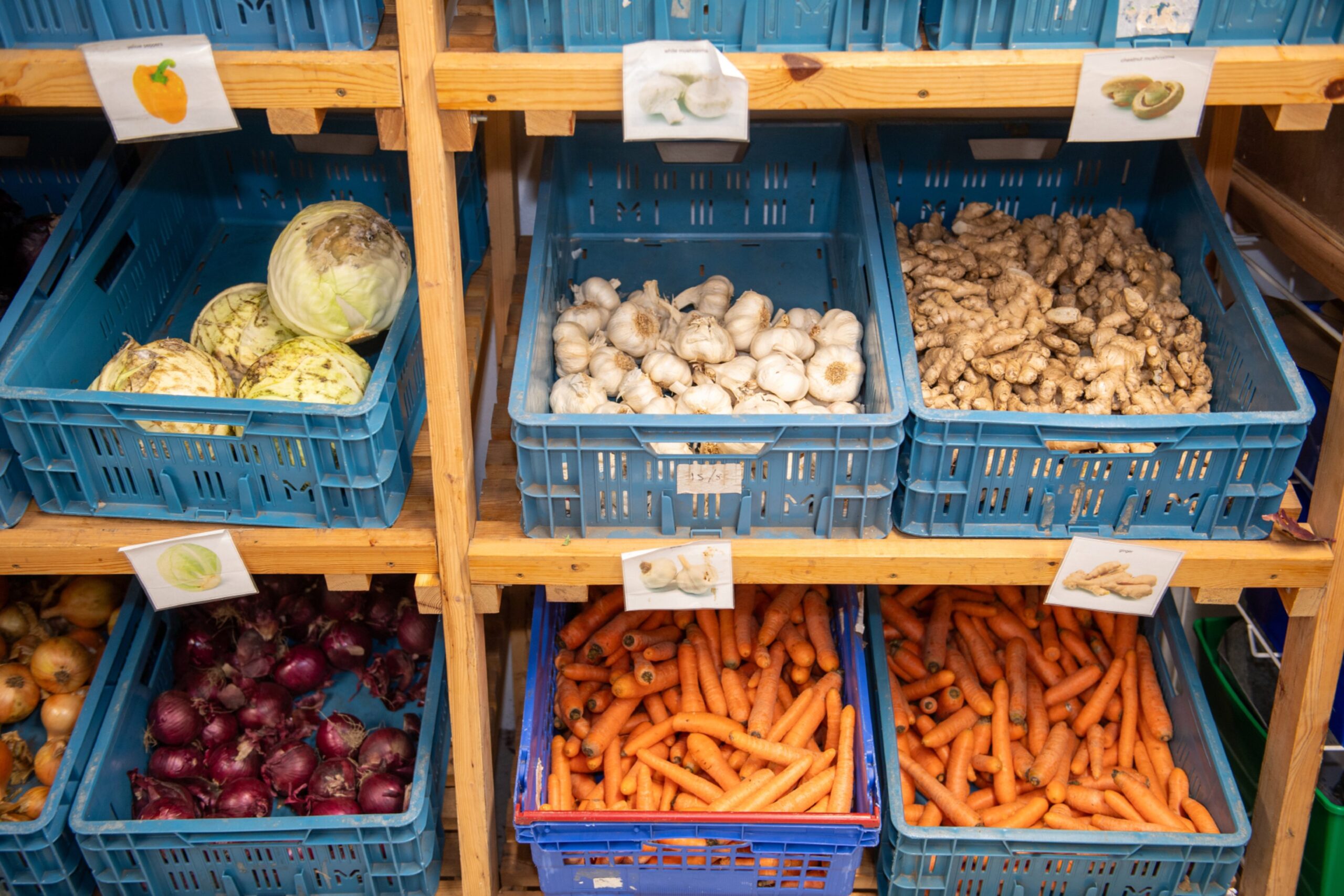
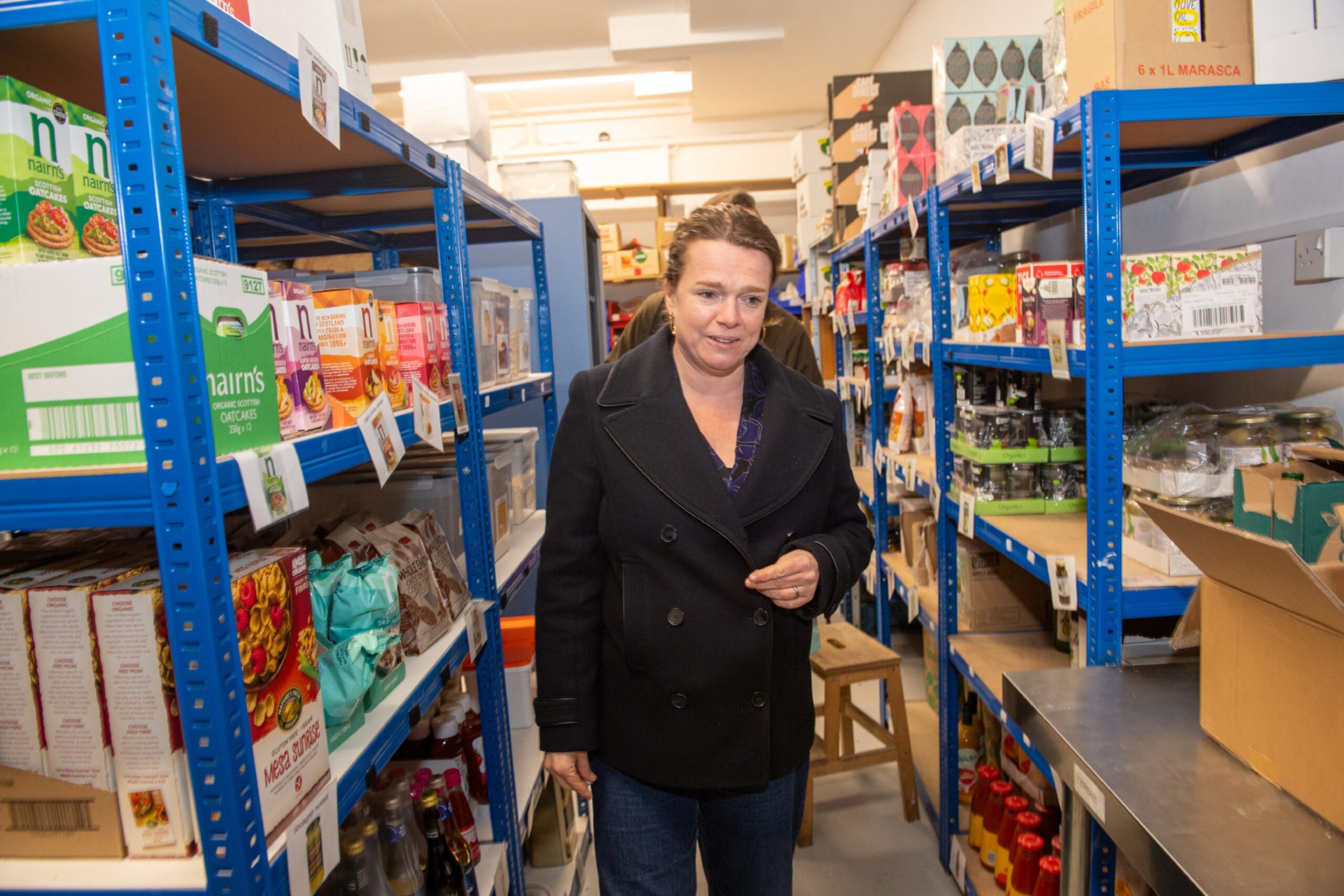
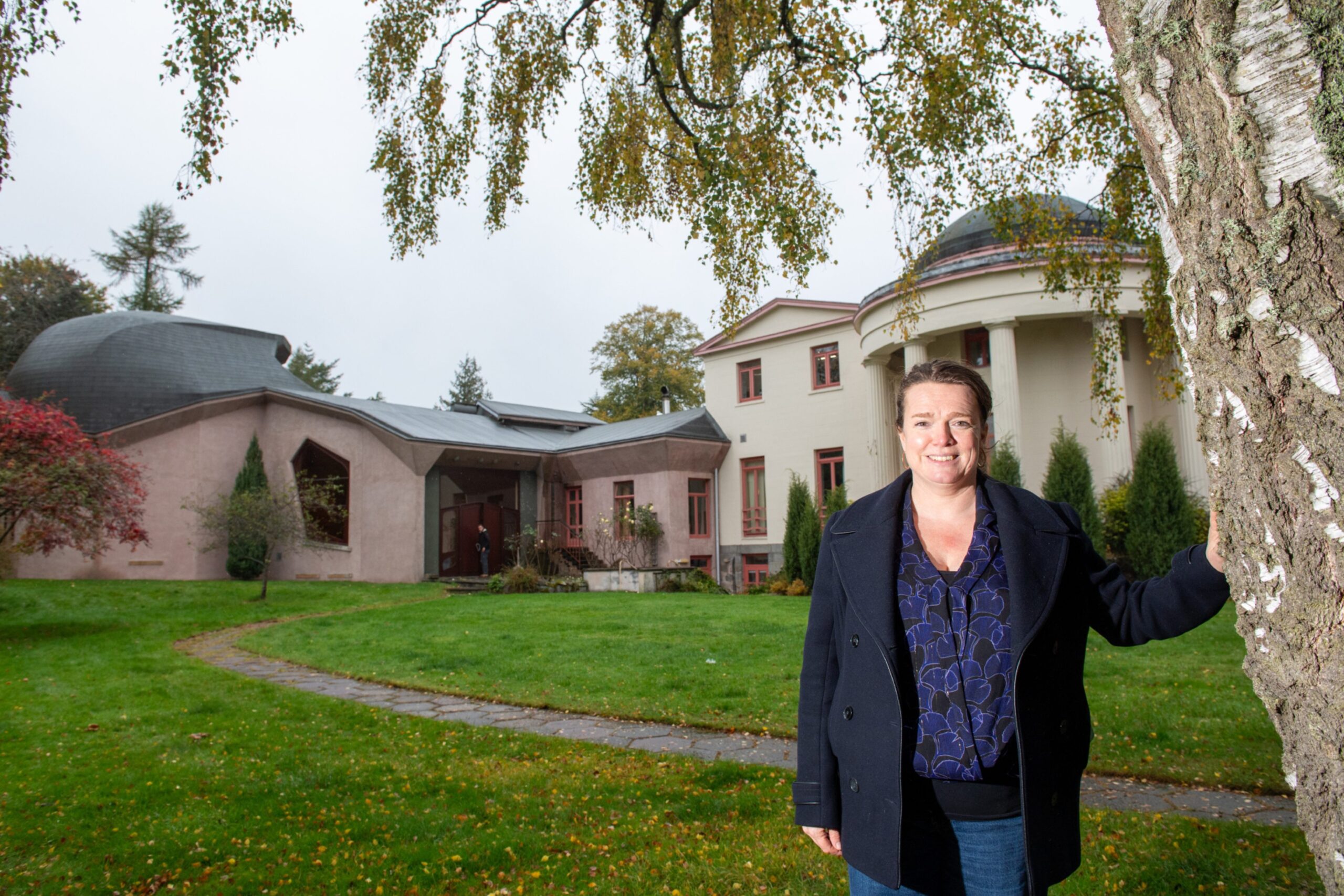
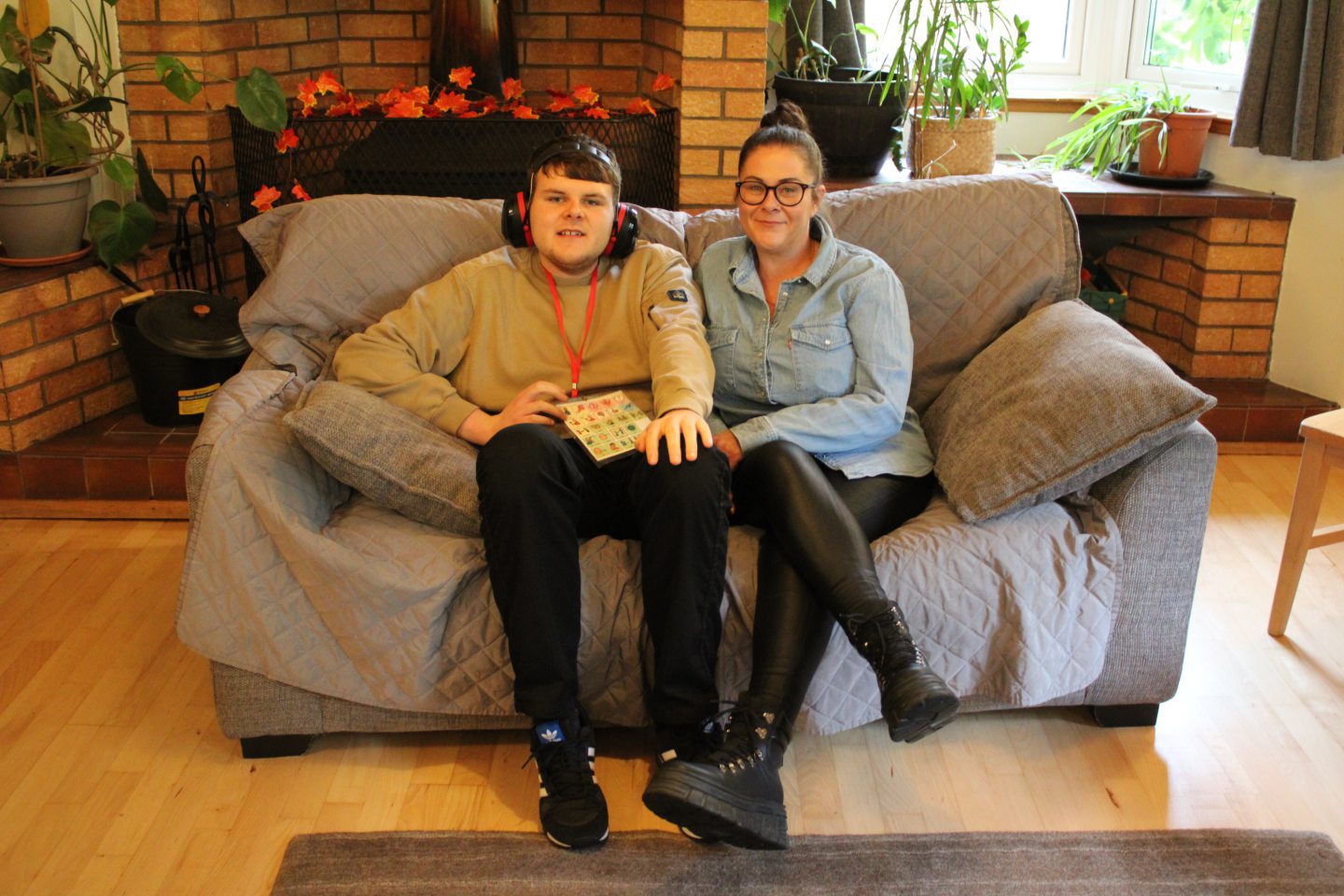
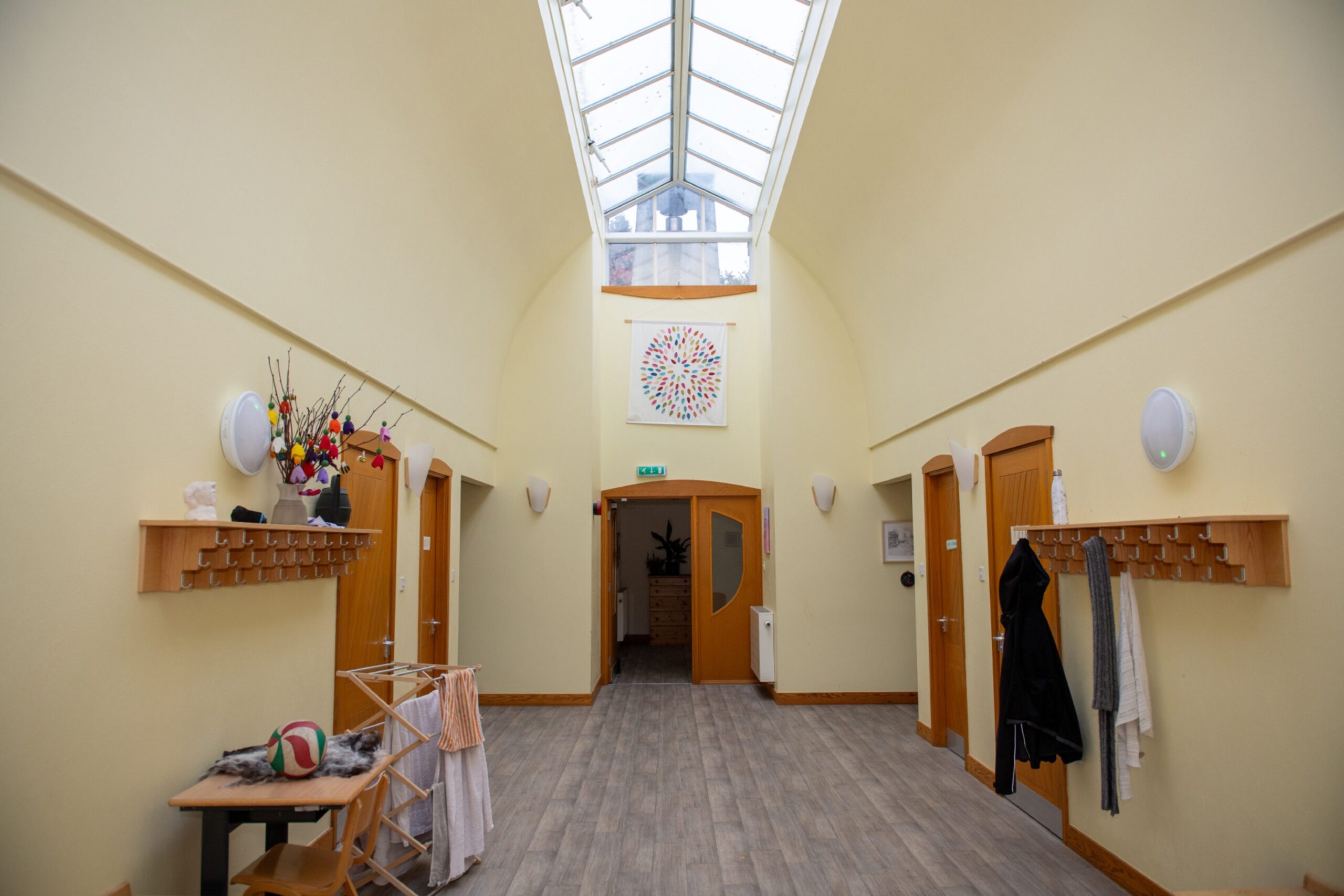
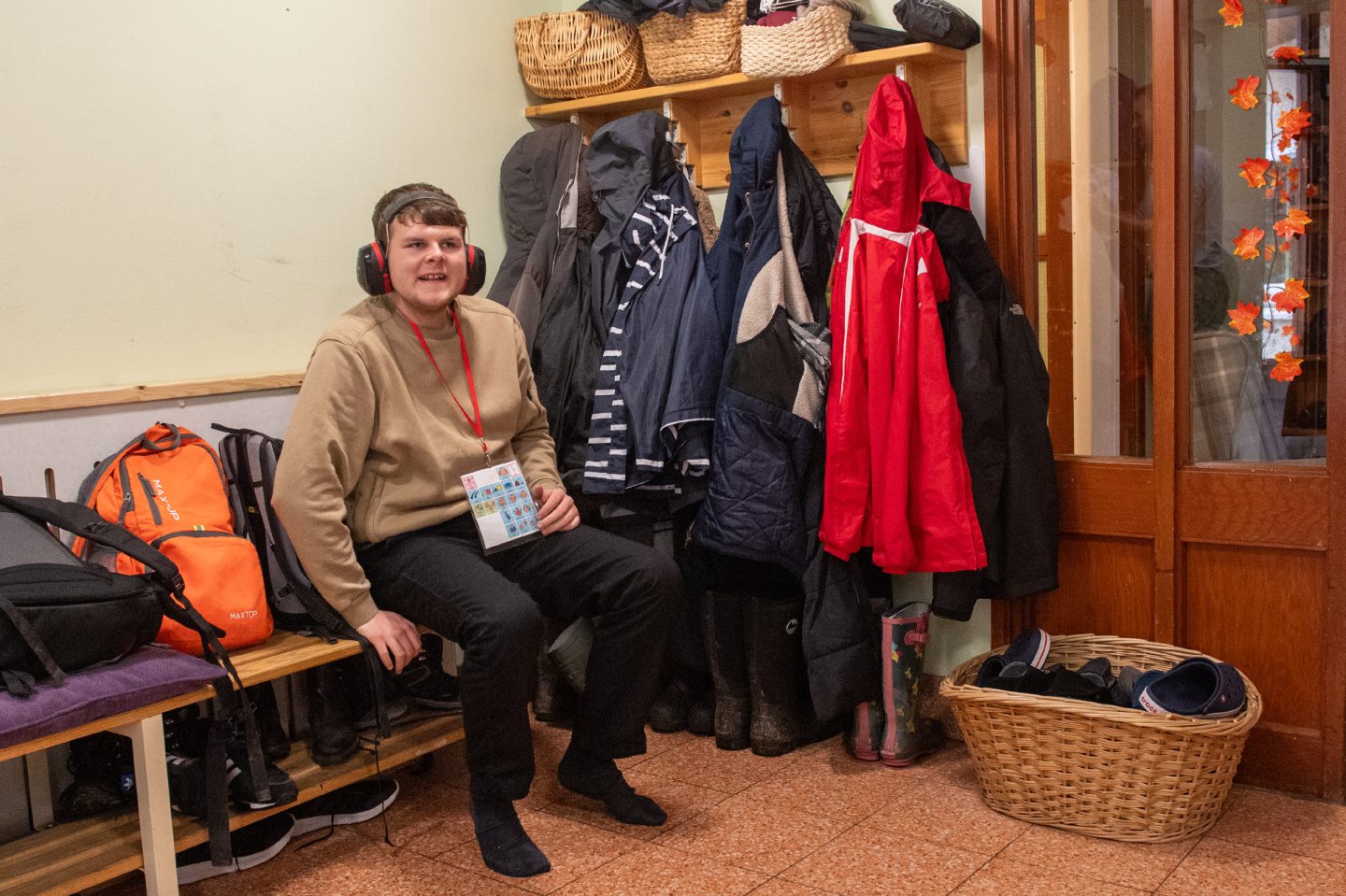
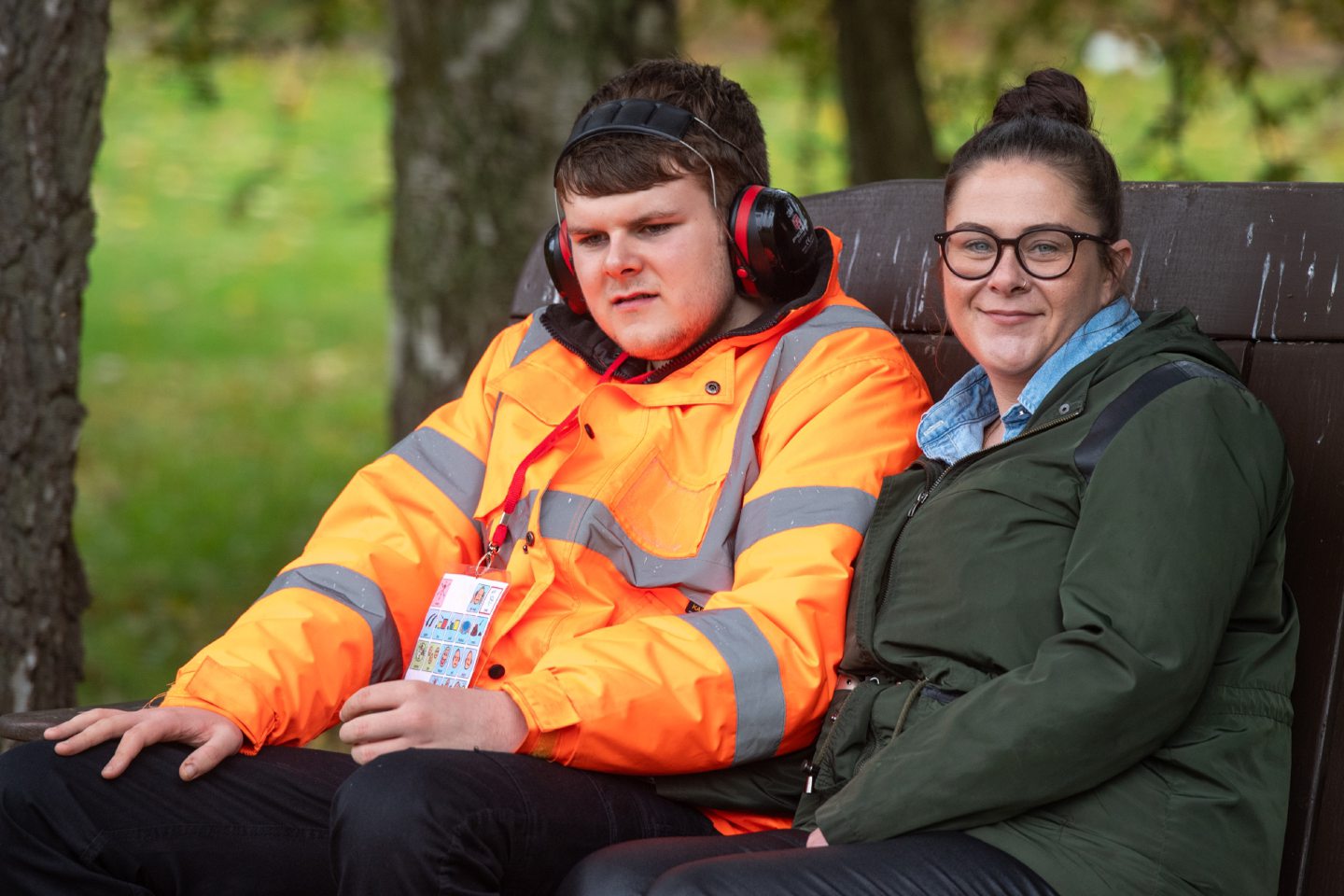
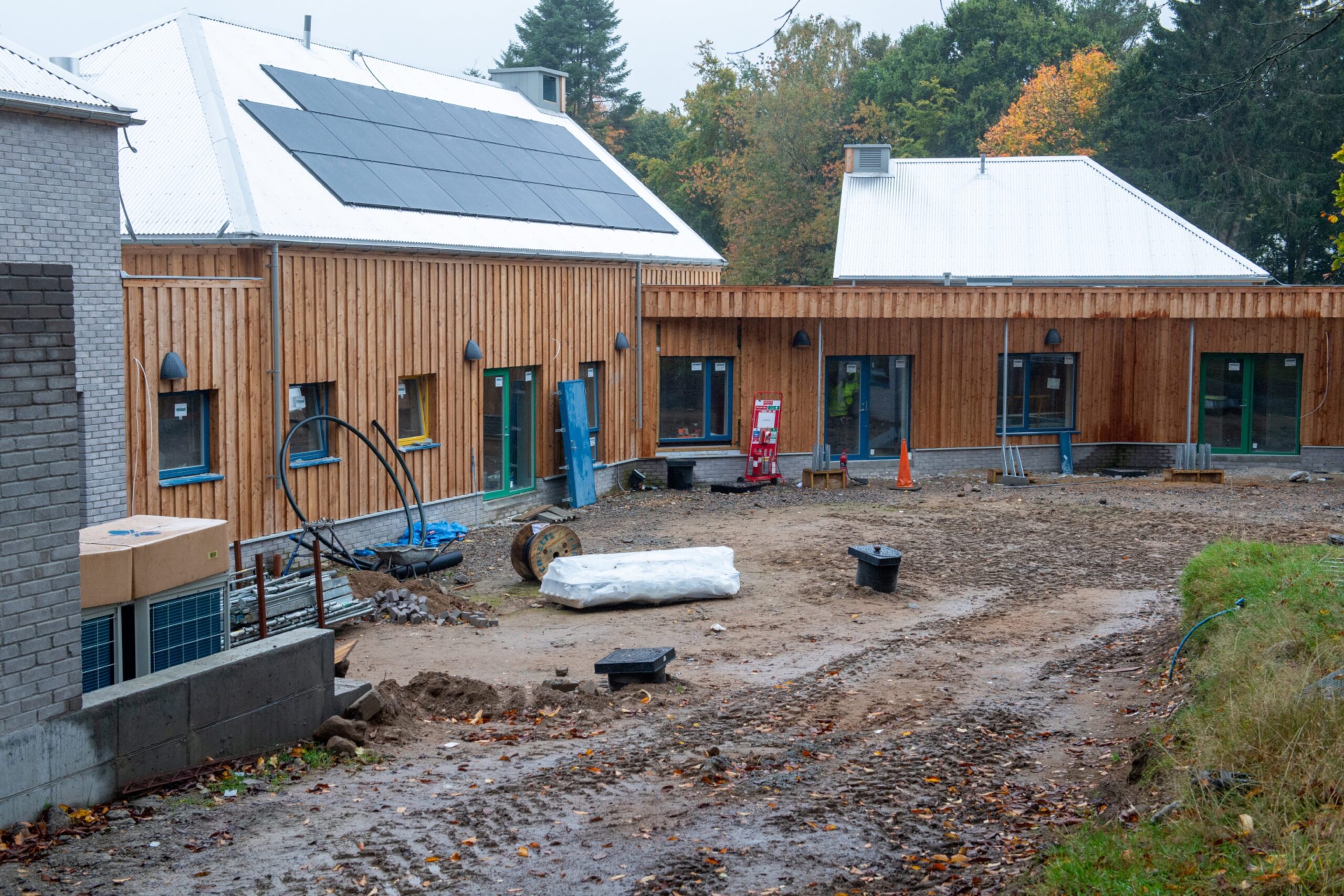
Conversation